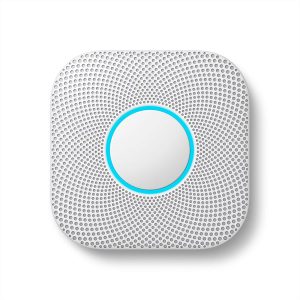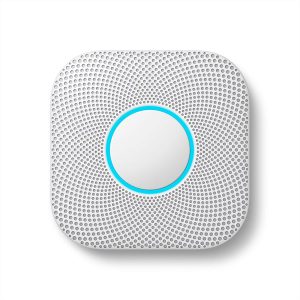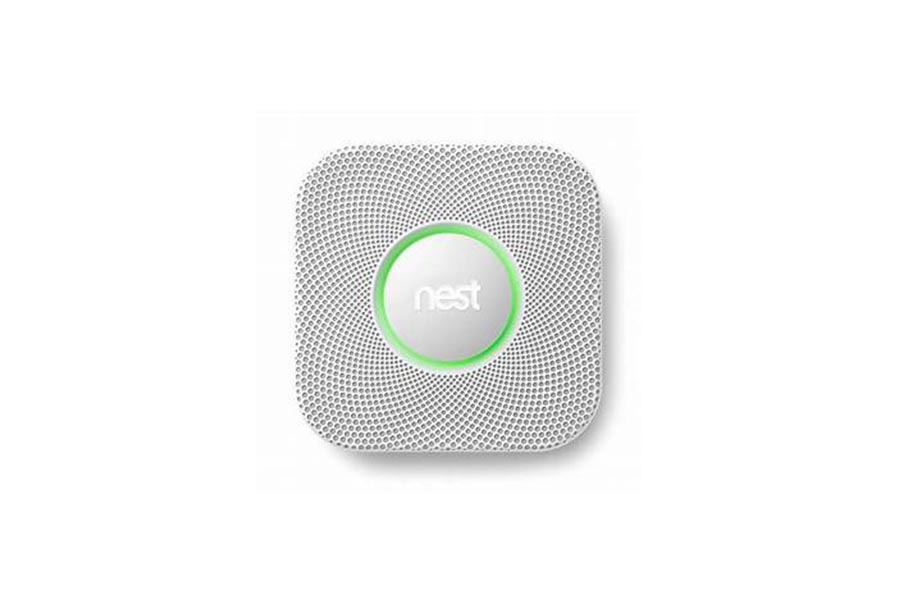The two models have a couple of distinctions. The primary distinction is in how Auto-Away interacts well with the Nest thermostat as well as the Pathlight.
For Auto-Away, the wired Nest Protects call home anytime they sense motion, allowing your home to access and exit Auto-Away mode more quickly.
Battery models phone home once a day and exchange all motion history information with the Nest thermostat to help it understand your habits.
Pathlight can work on wired Protect always to be on, but not on battery Protects.
If you’re considering purchasing the same device and are unsure whether to go with Nest Protect battery vs wired, we will help you to compare the differences between the two.
Despite the minor variance, there is a tiny distinction between the two models, as seen below:
| Specifications | Nest Protect Battery | Nest Protect Wired |
|---|---|---|
| Power | Power is provided by six long-life AA batteries. Batteries are made to last for several years. | In the event of a power outage, it is run by 120V-240V cables and equipped with three long-life AA battery backups. |
| Small green power light | Not required. | Nest Protect is linked to 120V-240V cables, as required by standards. A little green LED shows this. |
| Installation and mounting | Installs in a matter of minutes without the need for any cables. | Using the supplied 120V-240V connection, it can be installed in a matter of minutes. For connection to domestic wiring, there are wire connectors, or terminal blocks included. |
| Automatic switching | It helps your Nest home understand when you’re at home and when you’re not by improving automatic shifting over time. To save battery life, Nest Protects that are run by batteries update less often than Nest Protects that are connected. | It helps to enhance automated switching over time and prevent your home from transitioning to Away mode if other Nest gadgets cannot identify you. Nest Protects connected to the internet update more often than Nest Protects powered by batteries. |
| Sensor Type | Smoke/Carbon | Smoke/Carbon |
| Mobile Operating Systems | iOS, Android | iOS, Android |
| Dimensions | 5.3 x 5.3 x 1.5″ / 13.5 x 13.5 x 3.9 cm | 5.3 x 5.3 x 1.5″ / 13.5 x 13.5 x 3.9 cm |
| Weight | 13.4 oz / 379 g | 13.4 oz / 375 g |
| Connectivity | Bluetooth 4.0 LE, Wi-Fi 4 (802.11n) | Bluetooth 4.0 LE, Wi-Fi 4 (802.11n) |
Interaction with the Auto-Away System
The first big distinction is seen between wired and battery versions of Nest Protect is how they function in auto-away mode.
The wired Nest Protect calls home anytime it detects motion, allowing your home to transition in and out of auto-away mode.
The battery-powered version, on the other hand, only calls home one per day. In addition, all motion history information is exchanged with the Nest Thermostat at a certain moment because it can understand your routines more effectively.
Pathlight
The Pathlight function is included with the Nest Protect. But even though the functionality is included in both the wired and battery models of the Nest Protect, there seems to be a minor distinction between the two models.
The wired model has an application that allows Pathlight to be switched on at all times in the home.
The battery variant of the Nest Protect, on the other hand, lacks any such feature. It is obvious that the wired version includes an extra function.
However, in many of these situations, this added option is of little benefit.
LED Power Indicator
This is, without question, a slight distinction that would most likely have no influence on anybody’s purchasing.
The regular wired Nest Protect model has an LED power indication, but the battery-powered variant does not.
So although it does not make that much difference, it is critical that you are aware of them before purchasing any of the products.
Expected Life Expectancy
Life expectancy is by far the most essential of the two. It represents the amount of time you could anticipate the gadget to survive before dying.
Therefore, a smart gadget should provide a long lifespan so that customers would not have to replace it frequently.
For a longer life expectancy, a hard-wired Protect Nest along with a backup battery ought to be the best option. However, it will come at a high price. And that is where the battery-powered Nest Protect plays its role.
The gadget uses six AA batteries, and Nest claims that they will last for several years before needing to be replaced.
In addition, the Nest app will warn you six months in advance before the battery runs out, giving you more than enough time.
Nest Protect Battery-Powered Smoke Detectors

Nest Protect Battery-powered detectors, as the names indicate, are run with the aid of a battery.
Thus, there is no need to connect to your flat’s electrical circuit. The majority of battery-powered detectors operate on 9-volt alkaline, AA, or lithium battery packs.
Advantages:
Nest Protect Battery-powered detectors are simple to set up and inexpensive. Lithium-powered smoke detectors require pretty low maintenance since lithium batteries have a tendency to work for as long as the whole term of the smoke detector, which is about ten years.
Considerations:
Detectors powered by AA batteries would have to be replaced at least once every year.
Among the more conventional battery-powered choices might not be as synchronized as their hardwired versions, which means that in the case of a fire emergency, just one alarm may ring one at a time.
Nest Protect Battery-Powered Smoke Detectors

Nest Protect wired detectors must be linked or wired directly with the home’s power source.
Changing or repairing them is more difficult than with battery-powered Nest detectors because you must turn off the electricity at the main power board.
If you’re not really capable, hire an electrician to maintain your smoke detectors.
Advantages:
These smoke detectors are driven by the home’s power system, so they should remain operational for the same duration as the electricity is running.
In the case of power failure, they have backup batteries. Smoke detectors that are hardwired are a dependable choice that may be linked to other fire alarms across the property.
Considerations:
Setting up, monitoring, and maintaining these sensors requires a bit more technical know-how than battery-powered models, so you might have to hire an electrician.
Back-up batteries in hardwired alarm sensors should be checked and changed on a continuous basis.
What is the superior option: Nest Protect battery vs wired?
While both Nest Protect battery vs wired alarms are capable of protecting your house from fire emergencies, the preference is finally based on the amount of comfort and functionality you choose, along with your preferred budget.
Of course, the most essential thing would be to place smoke or fire alarms in each area of the house and at the appropriate locations within these spaces.
When trying to compare Nest Protect Wired vs. Nest Protect Battery, the distinctions are so slight that it’s difficult to declare one is preferable to the other.
The wired version has a few extra functions and can accommodate a backup battery, but it costs extra.
